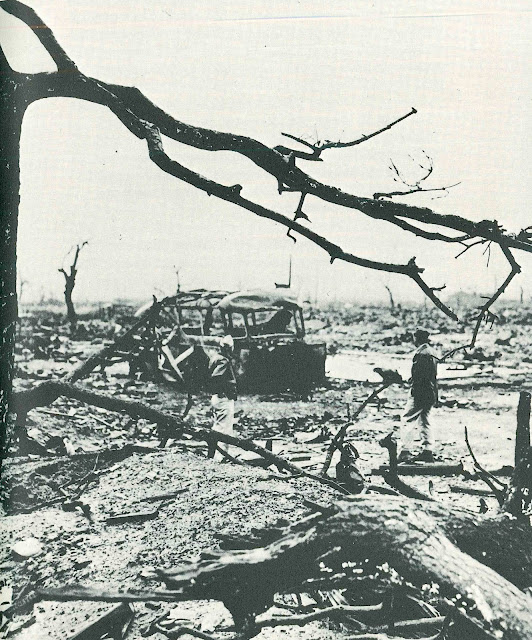At the end of World War II, the area around the hypocenter where the atomic bomb dropped on Hiroshima by the U.S. military on August 6, 1945, collapsed. All occupants of the bus that caught fire due to the hot air from the atomic bomb were killed. The fire damage caused tremendous loss of life. Soldiers from the U.S. occupation forces surveyed the damage caused by the atomic bomb in Hiroshima in September 1945.
Immediately after the bombing, the firefighting and rescue teams were stripped of personnel and equipment, making the worst of the damage. More than 90% of the citizens of Hiroshima who were within about 500 meters of the hypocenter were killed; it is estimated that about 140,000 people, most of them civilians, died as a result of the atomic bomb blast that was dropped and exploded on Hiroshima on August 6, 1945. About half of those who died in the bombing were killed instantly, many of them literally vaporized by the heat rays. The U.S. Atomic Bomb Survey team entered the city of Hiroshima in September 1945 to conduct research.
In September 1945, after the atomic bombs were dropped and exploded in 1945, Bernard Hoffman became the first American civilian photographer to be at the sites of the bombings of Hiroshima and Nagasaki. His photographs offered a glimpse of the devastating destructive power of the atomic bombs, and were published in the first issue of Life magazine in 1936. It was a photograph of the scene of Hiroshima after the atomic bombing. Soldiers from the U.S. occupation forces surveyed the desolate, charred wreckage of a bus in which an atomic bomb had been dropped and its occupants had perished.




No comments:
Post a Comment